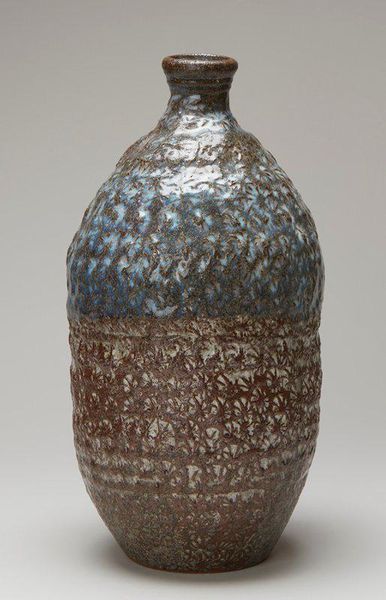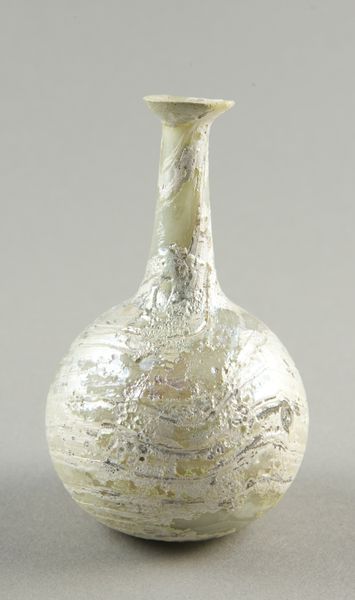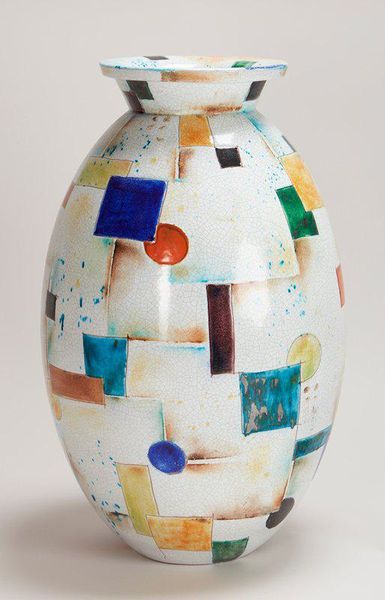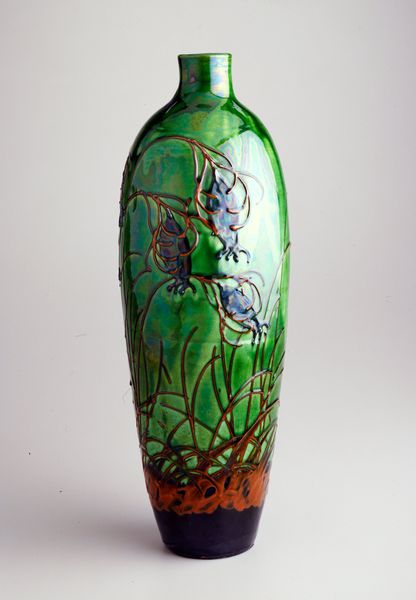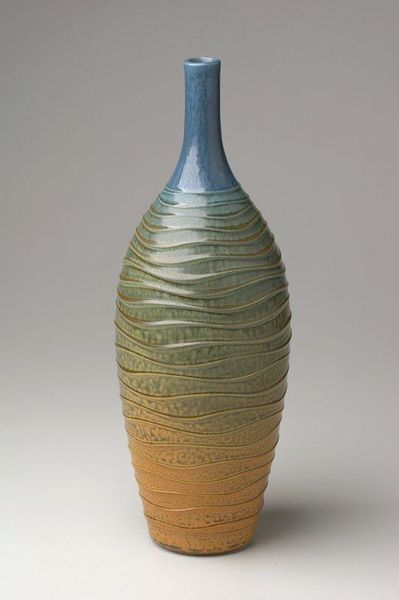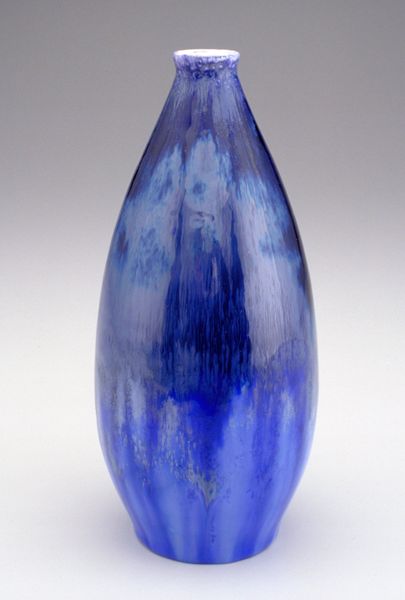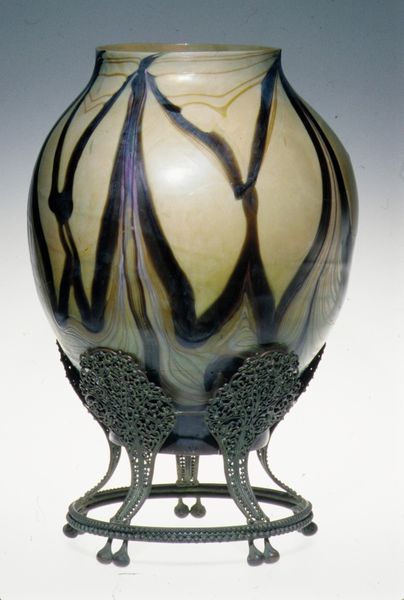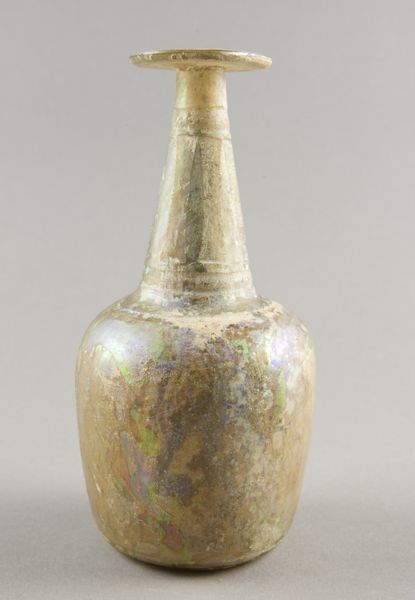
ceramic, earthenware, sculpture
#
art-nouveau
#
ceramic
#
vase
#
earthenware
#
stoneware
#
sculpture
#
ceramic
Dimensions: 8 1/8 x 5 5/8 in. (20.64 x 14.29 cm)
Copyright: No Copyright - United States
Curator: This is an earthenware vase, crafted around 1905, attributed to Bruno Emmel, a figure working within the Art Nouveau style. Editor: Immediately striking. The textured surface—a network of cracks running across the blue and off-white glaze—gives it a weathered, almost ancient appearance. Curator: Precisely. Art Nouveau ceramics often looked to nature, both for form and ornamentation. In this piece, that glaze, a kind of crazing, mirrors the geological phenomenon of cracked earth or parched landscapes, subtly speaking to environmental narratives of resource depletion and exploitation. Editor: Yes, and if you shift your perspective, that surface could easily evoke something quite different: the cosmos, stellar explosions frozen on the vase’s exterior. I'm drawn to the dramatic, almost painterly wash of cobalt blue that merges into the black near its base, creating depth, a visual weight grounding the whole piece. Curator: Which perhaps alludes to class stratifications of the time. The darker, obscured base suggesting the labor that supports the lighter, more ‘refined’ upper classes— a society equally fractured as the surface of the glaze. Art Nouveau existed during periods of intense industrial change and vast societal shifts. These visual cues speak volumes to this dynamic. Editor: Absolutely, the materiality is essential here, yet there is an asymmetry. The vase shape features the waist which softens the geometry; such interplay is at the heart of its appeal. This form reflects Art Nouveau principles but reinterprets it into something that challenges classical beauty standards, becoming a reflection of internal form rather than external standards of classical art. Curator: In fact, pieces such as these were deliberately challenging the status quo in their form and decoration. The rise of mass production meant that hand-crafted pieces of this type became emblems of resistance and a desire to reclaim individualism. Editor: Considering its complex visual language—the glazes, the cracks, and the textures all creating an amazing, subtle composition—it provides the observer with so much more than merely an aesthetic engagement. Curator: Agreed. It’s a fascinating example of how the decorative arts can speak to larger, critical questions about the structures underpinning society and how that links to art itself.
Comments
No comments
Be the first to comment and join the conversation on the ultimate creative platform.

